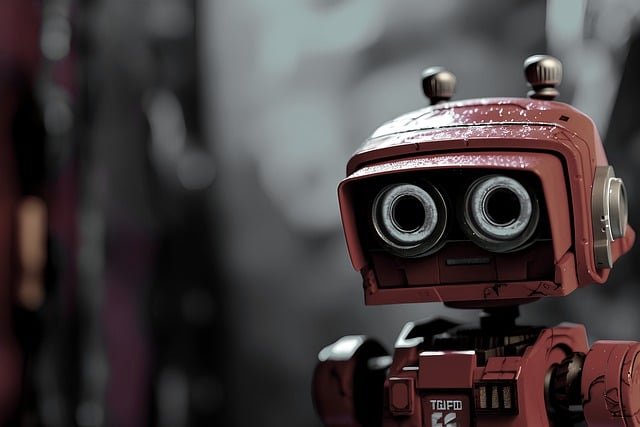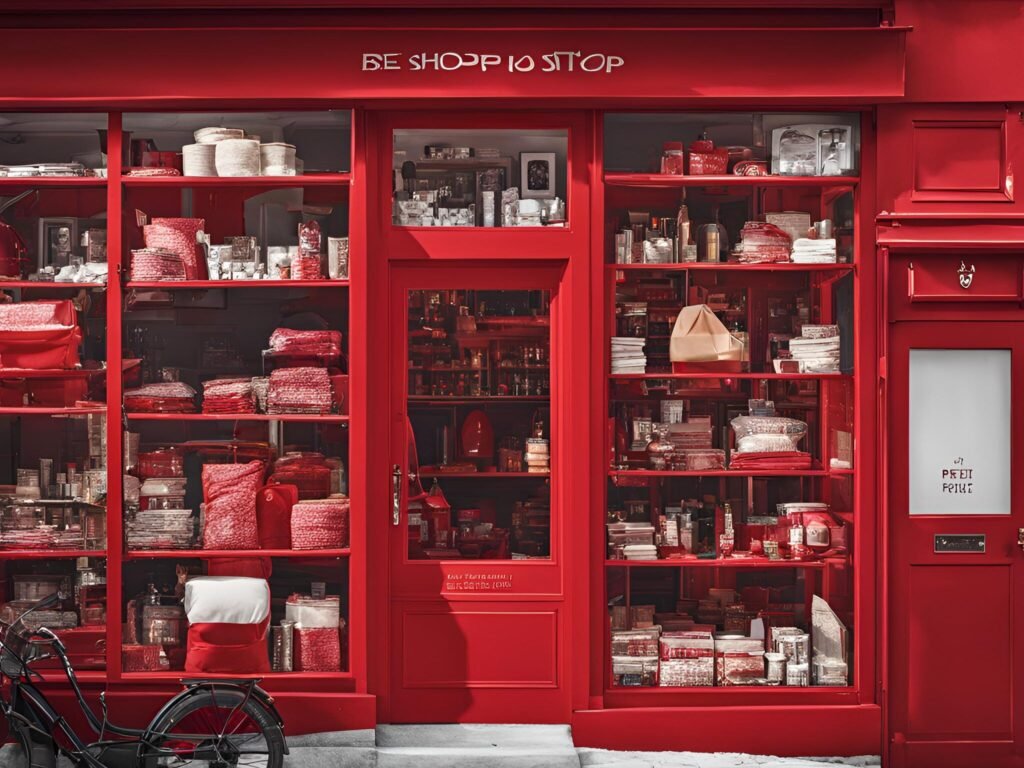
Understanding the Importance of In-Store Experience
The experience that takes place inside a retail location is an essential element in determining customer interaction within it as well as how they perceive the underlying retail brand. With consumers having to choose from a wide array of shopping alternatives, it cannot be emphasized enough just how important that memorable experience in store is. Not just a transaction but an opportunity to forge closer relationships with customers. Such connections are a key driver of satisfaction, an ingredient necessary to drive loyalty and advocacy.
Studies suggest that great customer experience in-store improves satisfaction on the waiting or shopping process, if you make it fun and quick. The most relevant retailers are those that engage the customer—whether it is through staff (trained to drive experience), an interactive point of view, or personal touch and service. If you give a good experience, overall your business will receive more attendance because customers who are satisfied are going to keep coming and tell their friends about the store. Thus, improving the customer experience in store can help significantly increase word of mouth advertising and with it also its brand image.
Additionally, this will yield long-term benefits beyond just a one-time spike in sales numbers. Brands that design immersive experiences are often the yellowtail of the marketplace, resulting in a more contextualized brand identity and perception. By getting them to feel special and understanding the needs they tend to develop brand loyalty. Thus, a lasting in-store experience can reinforce brand identity as long as the retailer creates an emotional connection that turns into repeat visits and lifelong support.
Bottom line: All of the different aspects of in-store experience are going to matter more for retailers that want to remain profitable. Focusing on improving customer touchpoints allows for high levels of satisfaction and loyalty that ensure a brand remains competitive in an even tougher retail environment. And prioritizing in-store experience gives retailers the opportunity to adopt a holistic strategy that leads to profits and growth.
What Makes for a Good In-Store Experience

The essence of a memorable in-store experience lies in the careful consideration of myriad equally important factors working together to improve the satisfaction quotient for consumers. Store atmosphere is one of the most crucial elements. An appealing ambience such as background music, lighting and smell can set the mood for the customers and greatly influence their experience during shopping. Create an inviting space that encourages shoppers to spend more time with the merchandise.
Another important aspect of an effective in-store experience is the layout of the store. How Smart Layout Can Make Fixture Conversion EasyIntuitive and considerate an arrangement of merchandise is the rudimentary key for allowing footfall around and shoppers to meander through Aisles seamlessly. Also, if they make sure to display the hot selling items at eye level it can improve visibility and sales too. This is yet another thing that can benefit from clear signage and also wayfinding; sign your customers in the right direction towards promotional items for their interests or items which are seasonally dictated.
A great shopping experience is built, in part, on excellent customer service. A professional, pleasant and responsive staff can go a long way in enhancing the store. The personalized assistance, quick answers to customer inquiries and a sense of community builds trust and makes the customers come back for more. Additionally, involving retail experiences where customers interact with product showcases or in any form of engagement can further enrich the shopping experience for them to feel incorporated into a whole and valuable part of it.
Finally, attractive displays enhance product visibility as one of the most important factors to catch customers attention. Story-based settings or creative arrangements that highlight your product advantages can work wonders. Leveraging aesthetics like color coordination and theme-based presentation helps to pull customers in as well as build an emotional connection to the products. A fusion of atmosphere, layout, customer service and product display can create an integrated shopping experience for the retail industry again, memorable ones that will remain on the minds of customers as well.
Creating a Unique Atmosphere

A retail space’s atmosphere is arguably the most important contributing factor to customer experiences and behavior in a store. An atmosphere that stimulates and excites the customer could improve shoppers perception of the brand, thereby increasing their purchase intention. This feeling is driven by a multitude of things such as lighting, music and scent that impact customer emotions and the choice you make.
One of the key elements in having an inviting ambience is lighting. There are many skull styles of Lightning which can create moods; warm lighting creates a cozy relaxed atmosphere & will invite shoppers to linger & explore. Retailers such as Apple use bright, strategically placed lights to accentuate their goods in order to evoke a sense of innovation and modernity. Alternatively, more ambient lighting in a boutique store can provide an intimate space that lets shoppers feel comfortable and spend longer looking around.
Another tool in building a vibe is your music. Different shoppers are going to have different moods and paces — influenced by the tempo, genre, and volume of music playing there. Retailers often use background music to communicate their brand identity. For example, luxurious boutiques may play classical or soft instrumental music that complements their desire for an elite shopping experience. Stores catering to a younger audience, such as urban fashion retailers may opt for pop radio tracks with tempo or beats that get shoppers energized and keep the environment feeling lively.
Scent: Scent is also key to creating a memorable in-store experience. It has been shown that scents trigger strong emotional reactions and even impulse buying! For example, retailers like Abercrombie & Fitch have even used exclusive scents throughout their stores to create a memorable experience for customers. Retailers can create a multi-sensory experience, one that will entice shoppers to stick around longer and form an emotional connection with the brand.
Configure Your Store Layout and Design Competently

The key design and layout of a store space contributes a lot towards making an in-store experience memorable. An optimal store layout in a well-designed space not only makes the best possible use of available room but also impacts customer behavior and guides their shopping experience. Retailers should strategically plan the path through which customers will flow, creating a layout that guides them his work efficiently from one area to another.
Successful design starts by identifying the store’s strategic lanes of movement: entrances, checkout areas and product exposure points. The entrance must be inviting as it should grab the customers attention and make them want to check out what you have to offer. Create a Prime Spot for Promotion or New ArrivalsVisual merchandising strategies can be used to draw attention to promotions, new arrivals, etc. Customers should be led through different parts of the store with clear pathways, preventing overlapping and chaos.
Signage is another critical component in enhancing the customer experience. Proper layout of directional and informational signs help navigate shoppers so they can find what they want as fast as possible. The fonts, colors and graphics used in the signage need to correspond with the store branding so that everything maintains a consistent image together. It also depends on the placement of the promotional displays — the display should not block pathways but they should be placed where readily visible to entice an impulse purchase.
Another thing for retailers to consider is product placement, which means arranging the items so that customers see and reach them easily. Bundle best-selling or related items for upsells and improved shopping experience. The store is able to engage customers and create pleasant shopping experiences through aesthetics, including ambient lighting, color palettes of shop display and textures. In the end, how customers perceive the brand and engage with it is greatly influenced by the planning and design of the retail space.
Training Staff to Provide Exceptional Customer Service

When it comes to retail, having trained staff for generating an unforgettable in-store experience is the core. Because employees are the main line of communication between a business and its customers, their interactions can impact customer satisfaction and loyalty. The best training programs will focus not just on the product but help develop skills to engage with customers better.
Having a well-rounded orientation program is an essential first step. Employees should be indoctrinated into the company culture and philosophy of positive brand values first and foremost, with customer focus being at the heart. This training, in turn, should stress upon greet customers promptly and servicing them according to their needs. This way, workshops and role-playing can create real customer experience where staff could train on important soft skills such as active listening and empathy that would help them in dealing with customers’ queries and concerns.
In addition, there should be regular training programs established so that the employees can always keep on honing their skills. Workshops should be organized on a regular basis focusing toward various concepts of customer service like conflict resolution, communication and upselling politely. Promoting feedback culture between staff is also an effective way to improve performance. Employees must be able to find it easier to talk about the pain points they face with customers as well as what techniques work best around them.
In addition, customer service employee incentives that acknowledge great service can drive staff motivation while emphasizing a culture of customer connection within the business. Success stories about customer service can create a friendly competition and motivate others to be better in their interactions.
In conclusion, providing the experience for in-store makes a long-lasting impression on customers which is why an investment of trained employees would be needed. As these findings indicate, retailers can have a much better shopping experience by building a customer-focused culture, training employees with soft skills to build good communication and continually reinforcing positive customer interactions.
Interactive Features to Engage Customers
For retailers wanting to set themselves apart in a crowded marketplace, creating lasting memories in-store is key. An ideal way to do this is by incorporating interactivity that allows the customers to interact with products and services in a more personal manner. Which can be anything from a product demonstration to an innovative virtual reality system that makes the customer participate during their visit.
Despite appearing simplistic, product demonstrations are one of the most powerful interactive techniques out there. Retail spaces allow customers to feel a product physically, creating an intimate bond element. For example, a makeup store can organize makeovers where customers can get some tips from the specialists and try on different products. Not only does this make the consumer more informed but it also drives him to make an immediate purchase as he has a positive experience which is first hand.
The second is one of the freshest tricks up his sleeve: virtual reality (VR) technology. Retailers can create VR booths for customers to experience their products in a whole new way. For instance, furniture stores can design virtual showrooms where buyers see how a product would fit in their home. It grabs attention and enables a level of interaction that would be impossible with traditional displays. VR customers stay in the store longer, likely leading to even more sales!
Yet another way is creating experience zones where they can get to enjoy. They are sections inside the store dedicated to expressing parts of energy that reflect the identity of a brand. Open up a mini-gym for customers to test the equipment or take part in fitness classes (a sports retailer, for eg) It provides entertainment, yes; but adds to someone else’s experience with your brand as well.
Pioneering interactive components in retail locations is important for consumer engagement, along with establishing retail brand loyalty. Retailers can create these memorable moments by inviting participation through product demos and virtual realities & experience zones thereby driving repeat visits and greater satisfaction.
One of the most important strategies is personalization.

In the cutthroat world of retail today, personalization is proving to be an effective method for improving customer experience inside the store. And retailers are starting to realize that creating an experience catered to the individual leads not only to customer loyalty but also sales. Utilizing customer data and insights, brands can give shoppers an environment that speaks to each visitor.
Loyalty programs and customer accounts are a great way to collect data. Such systems enable retailers to gather data on purchase activity, preferences and even demographic information. These programs allow customers to share their shopping behavior, which allows retailers to shape marketing and promotion activities based on what shoppers respond well to. In addition, in-store technologies such as mobile apps or interactive kiosks can enable care to receive real-time feedback and preferences for immediate course-corrections to the shopping experience.
What is also just as important is the implementation of personalized merchandising strategies utilizing captured data. Retailers become more focused in their product offerings, diversifying the right assortments that are personal to the customer so they only see what they care about. Using profiles to suggest products offers an immediate connection and brand association, which can drastically improve the experience of a customer while shopping. In addition to that, personalized customer service also plays a key role: Training staff how to deal with customers indirectly based on previous purchases steps normal interactions into something more valuable.
Personalized experiences might also include the design of personalized experience, events for certain customer segments, not just product recommendations. Fashion retailers may want to host exclusive styling sessions for certain customers, deepening the partnerships with their brands. These endeavors prove the significance of customization in the retail world, and they bolster a long-term approach to building loyalty amongst consumers. This approach identifies personalization strategies that not only enhances customer experience but also stands brands for longer-term success in a dynamic market.
Enhancing the Experience Through Technology

Tech integration has made old-school shopping trips more than ever before; they’ve become journeys full of interaction and experience. Mobile apps, digital signage and other CRM tools can not only help your business run but also offer the customer a more personalized experience that increases loyalty and satisfaction.
Mobile apps are a key tool at your disposal used to enhance the in-store experience. These apps can deliver crucial information, like product availability, promotions and detailed specs to consumers front-and-center on their phones. Additionally, apps can help customers find their way in the store by directing them to the specific area where they can locate what they need. With the help of location services, retailers can use notifications and offers to people as they stroll down an aisle, making shopping more personalized and interactive.
Digital signage is one such effective way to pass information and promotions rapidly. Interactive displays in the retail sector not only help capture shoppers’ attention with large screens and interactive whiteboards, but also allow dynamic content to reflect current offers or brand messages. Not limited to just advertising merchandise, this tech could also be used to create atmosphere with testimonials from customers, engaging visuals or live social media feeds. These aesthetically pleasing setups are a part of an immersive shopping experience that make real sense to the consumer.
Furthermore, customer relationship management tools have become paramount in shaping customized experiences. Analyzing the customer behaviors and purchase histories, retailers can leverage valuable insights to prepare targeted marketing campaigns and personalized communications. Based on data, customers get the right recommendations which leads to a fluid experience online as well as at brick and mortar shops. The inclusion of these technologies can create a much higher level experience in the store creating a more human connection between retailers and consumers.
Calculating in-store experience success is critical for retailers who wish to establish a captivating retail environment. A big part of this measurement is getting Customer Feedback. Surveys, suggestion boxes, and online feedback forms can be an excellent way to capture customer feelings. By asking for feedback on everything from product setups to employee engagement, retailers can understand more about what consumers really like.
Beyond direct feedback, running the numbers can be an effective way to assess store experience impact via sales data. Retailers can analyze these trends over periods of time, such as monthly sales records or evidenced via customer purchase patterns, and identify aspects of their experience responsible for generating revenue. If there is a bump in sales after an in-store event, that would indicate that the experience was successful and should be repeated. Furthermore, if something is possible but not successful, data will give you context to help improve that area.
A third option is to watch your customers interact with the products they see in-store. Retailers can make use of a mystery shopping approach, in which they hire individuals to evaluate their shopping experiences or devise analytics tools that observe customer movement inside the store. For example, these kinds of observations can illustrate trends regarding where customers linger or show signs of frustration to prompt changes that could help improve store layout or product placement.
This information with the help of these different techniques helps retailers to make decisions for enhancement or changes. With ongoing enhancements gleaned by customer feedback, sales analytics, and simple observation, the in-store experience can be regularly updated to avoid stagnation. By using these methods to measure success, retailers can enhance loyalty and satisfaction which in turn boost the extra fine shopping experience. That, in turn, keeps the success rolling to improve these in-store experiences.



